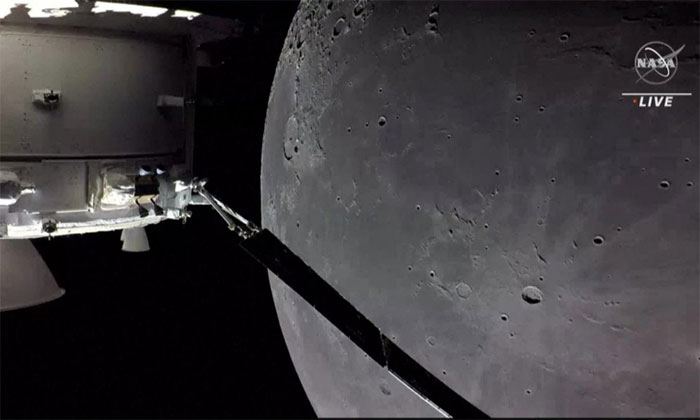The Orion spacecraft on December 5 flew close to the Moon and used its gravitational pull to change course, marking the return journey of the Artemis 1 mission.

Orion spacecraft captures images of the Moon and Earth (crescent shape) on December 5.
At its closest approach, NASA’s unmanned spacecraft flew within 130 km of the Moon’s surface. Communication was interrupted for 30 minutes while the spacecraft was on the far side of the celestial body. Subsequently, the European Service Module, responsible for providing power to Orion, successfully ignited its main engine for over three minutes to guide the spacecraft home.
This was the final critical maneuver of the mission. Now, Orion will make only slight adjustments to its trajectory until it lands in the Pacific Ocean off the coast of San Diego, expected at 9:40 AM local time on December 11. It will then be retrieved and hoisted onto a U.S. Navy ship.
(Video: AFP).
The Artemis 1 mission began its journey to lunar orbit on November 16 from the Kennedy Space Center in Florida, USA. The mission lasts for 25 and a half days.
A week prior, Orion set the record for the farthest flight from Earth by any spacecraft ever launched to the Moon. The spacecraft traveled more than 64,374 km behind the dark side of the celestial body, reaching a distance of 434,523 km from the Earth’s surface.
The return to Earth’s atmosphere will be a severe test for the spacecraft’s heat shield. This shield must withstand temperatures of around 2,800°C, approximately half the surface temperature of the Sun.
According to the Artemis program, the United States aims to establish a long-term presence on the Moon in preparation for the next journey to Mars. If the Artemis 1 mission proceeds smoothly, Artemis 2 will send astronauts on a lunar flyby in 2024, and Artemis 3 will carry a crew to land at the Moon’s south pole the following year.

















































